The battle for Mosul has already begun, but what matters is the day after
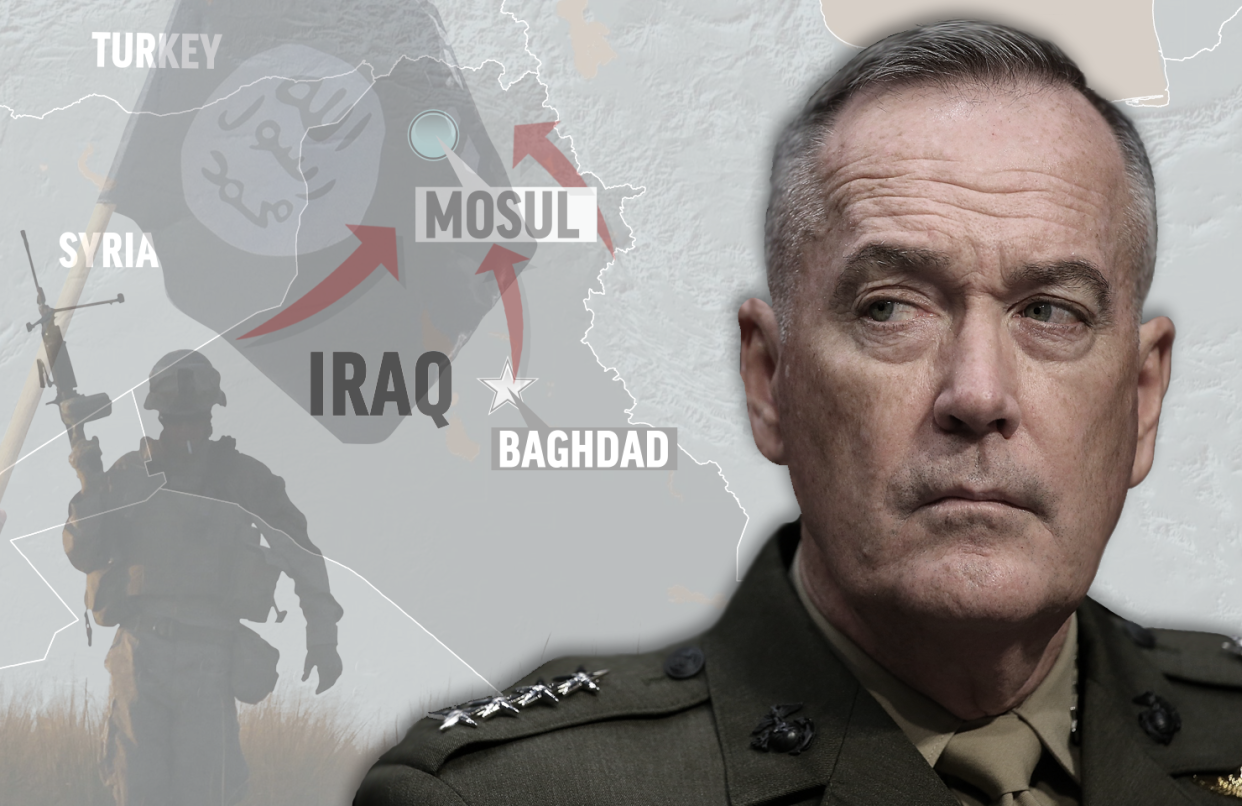
BAGHDAD – In the startling heat of the tarmac, the backwash from the helicopter blades still feels like a dragon’s breath, and the unmistakable smell — of burning trash, automobile exhaust and something exotic carried on the scirocco wind — brings back distant memories. From a helicopter, the bright ribbon of the Euphrates and the ochre sprawl of Baghdad still look the same under a dirty sky. Inside the Green Zone, there are the familiar landmarks — Saddam Hussein’s arch of crossed swords, the blue eggshell memorial to the Iran-Iraq War, and the Iraq government building that was partially destroyed by the United States more than a decade ago, and is once again serving as a U.S. wartime command center.
A generation of U.S. military officers that came of age during two previous Iraq wars is returning for what they hope will be a decisive third campaign, this time against the Islamic State of Iraq and Syria, or “Daesh,” in the Arabic acronym. Baghdad must have seemed eerily familiar to Marine Corps General Joseph Dunford, the chairman of the Joint Chiefs of Staff, when he recently landed here to assess preparations for the crucial upcoming battle for Mosul, Iraq’s second-largest city. As a colonel, he ably led the 5th Marine Regiment during the 2003 invasion, earning his nickname of “Fighting Joe” Dunford. All these years later, Dunford and other senior U.S. military commanders are back, hoping for a lasting victory against tyranny and terror in this beleaguered nation.
The current moment feels most like 2007-2010, when U.S. forces nearly achieved their goals of securing Baghdad and destroying al-Qaida in Iraq. Today, Dunford and his commanders are field-testing a hybrid style of operations. U.S. airpower, intelligence gathering and logistics expertise will support local forces on the ground, including the Iraqi army and police, Kurdish Peshmerga troops and Shiite and Sunni militias called Popular Mobilization forces. That’s a slower and less certain approach than using American ground forces directly, but neither Iraq nor Washington has much appetite for a major U.S. deployment.
Sometime in the next four to eight months, the viability of that strategy will be tested in the battle to liberate Mosul — and, hopefully, to destroy ISIS as an existential military threat and allow the Iraqi government to stand on its own and defend its territory.
“When people ask me when the Battle of Mosul is going to start, I tell them it’s already started,” said Dunford, speaking to a small group of reporters who accompanied him to Iraq. Iraqi armored forces recently captured a key airbase and staging area just 35 miles south of the city, for instance, while Kurdish Peshmerga forces have advanced their front lines to roughly the same distance from the north and east. “We are gradually tightening the noose around Mosul, and the effects of our isolating the city are already starting to tell in terms of limiting the enemy’s ability to move forces and leaders in and out. That has allowed us to accelerate operations that target their leadership and resources,” Dunford said.
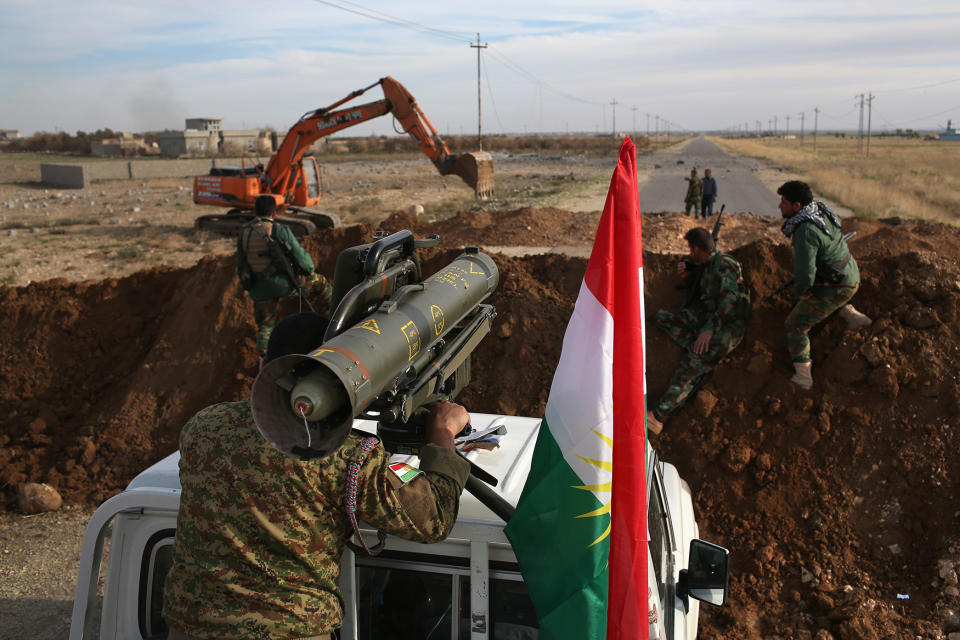
Indeed, Joint Special Operations Command’s targeted killing operations by drones and commando raids have already methodically eliminated more than 120 “high-value” ISIS leaders, and a relentless U.S.-led bombing campaign continues to sap the will of the rank-and-file to continue fighting. “Without getting ahead of the commanders that are going to fight this battle, it’s already clear that Daesh forces are less disciplined, and their willingness to hold ground and stay and fight to the end has significantly eroded,” said Dunford. He said allied forces were reaching out to leaders among the more than two million civilians inside Mosul, in hopes of winning their cooperation during the battle to come. “The Iraqi leadership knows they have to prepare humanitarian assistance and basic services for the internally displaced people we’re likely to see in the aftermath of the Mosul operation. That’s part of the many political and military considerations we are working through in preparation for what we’re calling ‘the day after Mosul.’”
Few officers are more familiar with the lessons learned from the United States’ long, often bitter experience in Iraq than Lt. Gen. Sean MacFarland, head of the anti-ISIS campaign as commander of the Combined Joint Task Force (CJTF) — Operation Inherent Resolve. As a colonel and brigade commander in the restive Anbar capital of Ramadi in 2006, MacFarland was an early practitioner of the counterinsurgency tactics of “clear, hold and build.” The unusually close partnership that he formed with tribal Sheikh Abdul Sattar Abu Risha blossomed into the Sunni tribal uprising against al-Qaida in Iraq (AQI) that became known as the “Anbar Awakening.” The Awakening movement was instrumental in originally driving AQI out of its strongholds in Anbar, but the terrorists exacted their revenge by assassinating Sheikh Abu Risha in 2007.
“Unfortunately, another Anbar Awakening is probably not possible today, because a lot of Sunni sheikhs and tribesmen have recently ended up like my friend Sheikh Abu Risha. They have just been ground down by ISIS to the point where 500 members of a single tribe were murdered a while back,” said MacFarland, a tall, lanky officer who stopped outside the U.S. Embassy in Baghdad on a recent evening to talk with reporters. MacFarland has been forced to rely more heavily on the painstaking process of training, equipping and assisting Iraqi Security Forces, which now include a 6,000-man Sunni Popular Mobilization group, and roughly 17,000 Sunnis in Iraqi police uniforms. In all, the United States and its allies have now trained 27,000 Iraqi troops, including 8,700 Kurdish Peshmerga fighters.
“Early on, a lot of people were putting pressure on me to go faster with our Train and Assist Program, because they didn’t think we were making enough progress, but I held back and let the Iraqis go at their own pace,” said MacFarland. In a recent operation that involved Iraqi armor units maneuvering roughly 100 kilometers, he noted, U.S. advisers thought it would take one day. Instead, it took Iraqi forces 29 days. “Well, that’s OK,” he said. “It really doesn’t matter to me if it takes a day or a month, as long as they get it done.”
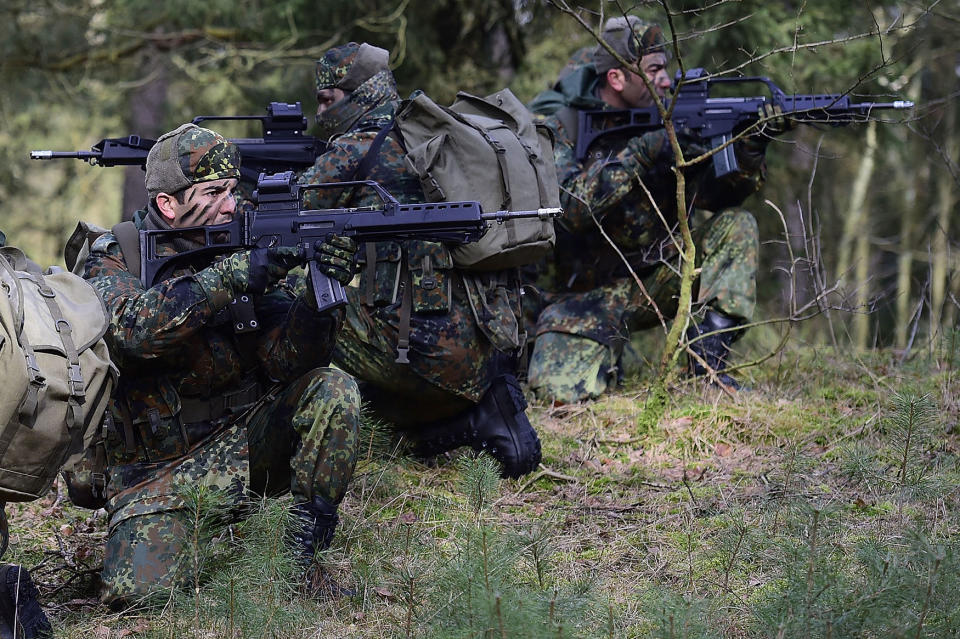
U.S. patience began paying off last December, when a force of Iraqi Security Forces (ISF) and Sunni tribal fighters, backed by U.S. airpower, recaptured the provincial capital of Ramadi from ISIS after a tough, three-month siege that destroyed much of the city. In June came the capture of Fallujah, a battle that showed both the promise and the perils of this style of hybrid operations involving proxy forces. In the battle of Fallujah, ISIS fighters were relatively quickly routed, and U.S. surveillance aircraft spotted a large ISIS convoy trying to escape up the Euphrates River Valley in the dead of night. Caught in the open, the convoy was destroyed by U.S. aircraft with an estimated death toll of 500 ISIS fighters, an operation that one U.S. intelligence officer in Baghdad called a “mini-Highway of Death,” a reference to the U.S. destruction of Republican Guard convoys fleeing Kuwait in the 1991 Persian Gulf War.
According to Human Rights Watch, however, Shiite-dominated Popular Mobilization forces and some Federal Police units involved in the battle of Fallujah committed atrocities against Sunni civilians, including torture and executions. After the fall of Fallujah, there were reports of nearly a thousand atrocities, most committed by Shiite militias. Given the potential for even worse human rights violations in Mosul due to its much greater size, there is pressure on the Iraqi government to keep Popular Mobilization forces away from civilian populations, especially civilians of a different ethnic faction.
After Iraqi security forces recaptured the lynchpin Anbar cities of Ramadi and Fallujah, and pushed ISIS fighters back up the Euphrates River Valley towards the Syrian border, all eyes have now turned north to what one U.S. intelligence officer in Baghdad called the “big dog in this show.” Mosul is one of the twin pillars of the ISIS “caliphate,” along with the Syrian city of Raqqa. A decisive victory there will break the group’s grip on population centers in Iraq, and likely send its fighters fleeing back across the border to Syria.
U.S. commanders in Iraq were especially heartened by a recent operation by the Iraqi 15th and 9th Armored Divisions, which captured the strategic airbase and logistics hub dubbed “Q-West” near the northern city of al-Qayyarah, just 35 miles south of Mosul. During the operation, the Iraqi army units successfully crossed the Tigris River with U.S.-supplied combat bridging equipment. The successful bridging operation was the first of its kind by an Arab army since the 1973 Arab-Israeli war. It has given Iraqi Security Forces freedom of movement across the Tigris that is now denied ISIS commanders, who must use vulnerable boats; more than 100 have been destroyed from the air. The operation to capture Q-West also cut off a group of more than a thousand ISIS fighters north of the city of Baji, who cannot be reinforced or easily withdraw into Mosul. After the Iraqi armored forces completed their occupation of Q-West, Iraqi Prime Minister Haider al-Abadi issued a statement calling for the people of Mosul and the surrounding Nineveh province to “prepare for the liberation of their cities.”
“We’re now in a ‘refit and consolidate’ phase, where the Iraqi forces are building their combat power at Q-West in anticipation of the final push to Mosul,” said a U.S. officer in Baghdad, who noted that CJTF-Inherent Resolve has hired private contractors to move much of the Iraqi materiel and equipment north, to compensate for a noted lack of logistical capability on the part of the Iraqis. “The ISF is not an expeditionary army, so the farther it travels from Baghdad, the harder it is for them. In the meantime, the U.S. continues to shape the battle space around Mosul by hitting ISIS targets every day. We have plenty of targets to bomb while the Iraqis pause to gather their forces and equipment.”
U.S. officials concede that the Battle of Mosul will force the Iraqis to confront a number of difficult issues, starting with the composition of a siege force that is expected to number between 20,000 and 30,000 troops, including roughly 5,000 Peshmerga. Following a decision by the Obama administration earlier this year to relax restrictions, U.S. combat “advise and assist” teams will operate at the brigade level, closer to the frontlines and more effective in helping coordinate operations and call in U.S. airpower.
The Iraqi government in Baghdad and Kurdish officials in Irbil are in frequent communication to coordinate the upcoming Mosul offensive. U.S. officers have advised the Iraqis to assign each assault force a different sector, so the Kurds logically advance from the north, the ISF from the south, and Shiite and Sunni Popular Mobilization groups approach from different right and left sectors. “The trick is getting all these people that don’t really like each other to play nice and take Mosul together,” said a U.S. officer.
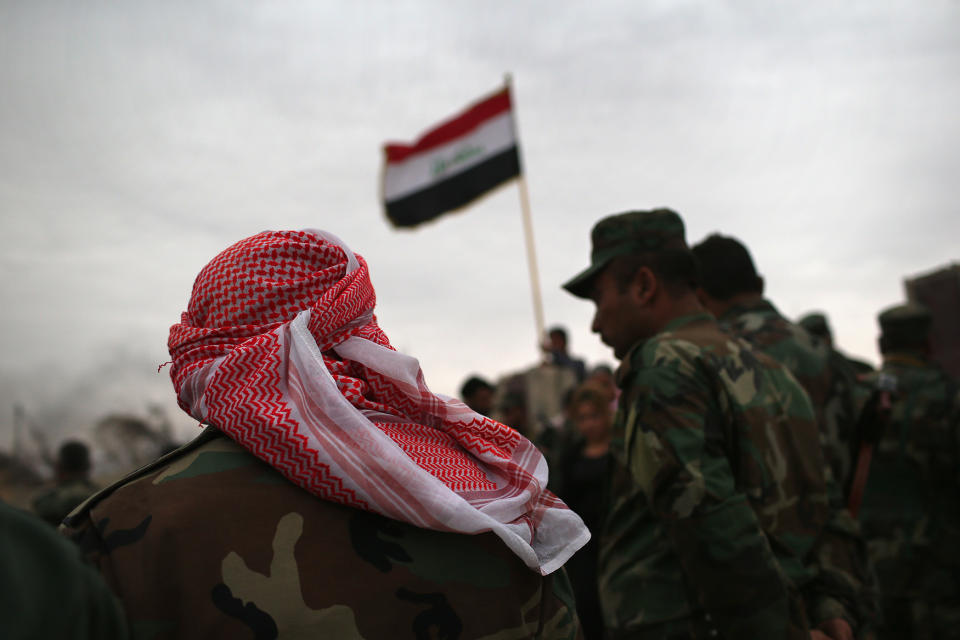
U.S. officials promise to use their considerable leverage to ensure there is no repeat of the atrocities in Fallujah. “It’s fair to say that the militias remain an issue that has to be addressed, and the Iraqis are grinding through it,” said Dunford, who met with Iraqi Prime Minister Abadi and Kurdish President Masoud Barzani during his recent visit. “After Fallujah, we know what is not acceptable. So I’m comfortable everyone understands that issue must be resolved, and there will be consequences if it isn’t. For the operation to be successful, the people of Mosul need to feel they are being liberated by a capable force that will respect them.”
The Battle of Mosul is also bound to highlight the contentious issue of “internal disputed borders” between largely independent Kurdistan and Iraq proper. Kurdish leaders argue they should be able to keep all the territory Peshmerga forces have seized and defended since the ISIS invasion of 2014, a position the Iraqi government has rejected. The Shiite-dominated Baghdad government has also been slow to extend services to recaptured Sunni territory, outreach that many experts see as critical to denying Sunni ISIS sympathetic backers. The recapture of Mosul and expulsion of ISIS from Iraqi territory will also raise the question of what becomes of the Popular Mobilization militias, many with close ties to Iran. “There are still a lot of disagreements to resolve, but in truth, nothing in Iraq ever gets decided until the 12th hour,” said a U.S. official in Baghdad.
Perhaps the greatest unknown surrounding the upcoming Battle of Mosul is what becomes of ISIS once it loses its last major grip on Iraqi territory, and how that impacts the U.S. military presence. If bitter history is any guide, ISIS will follow the path of its predecessor al-Qaida in Iraq, morphing into a terrorist insurgency that hides in the shadows and torments the country with frequent terrorist spectaculars designed to kill the maximum number of civilians and discredit the Baghdad government. Even without controlling territory in Iraq, ISIS fighters are likely to find sanctuary in the ungoverned wilds of eastern Syria for years to come. Experience suggests the Iraqis will need a U.S. military presence to cope with that terrorist threat.
“If someone asked my advice, I would say that the U.S. military needs to be in Iraq not for the Iraqis, but for Americans,” said Lt. Gen. MacFarland. “We had all but destroyed al-Qaida in Iraq before we left, and it grew into ISIS like a weed. And we’ve discovered with ISIS that if we’re not around to help manage that threat, and cut it down to size, pretty soon the entire region will be overrun with weeds. And before long, the weeds will start sprouting in Europe and the United States. We’ve already seen that happen.”
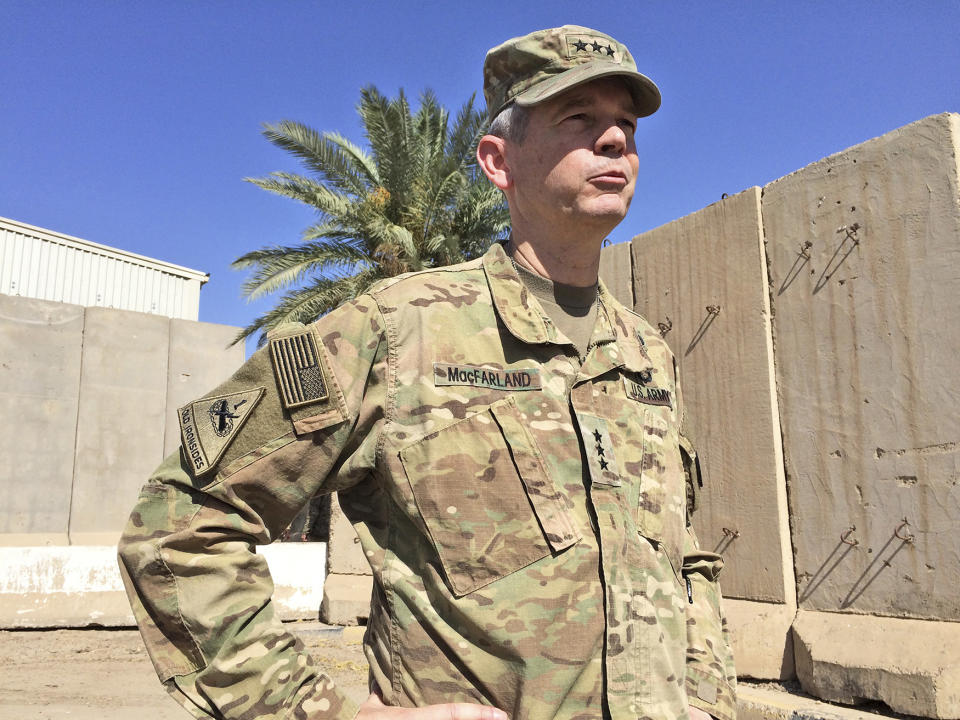
James Kitfield is a senior fellow at the Center for the Study of the Presidency and Congress.


